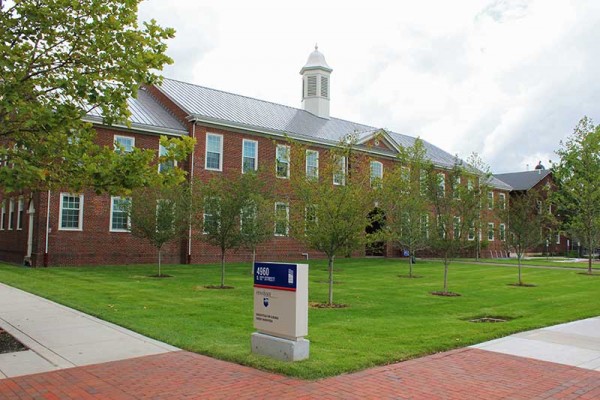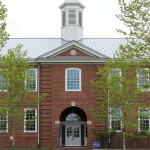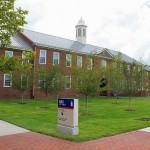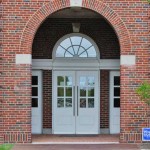Penn State Navy Yard – Philadelphia, PA
The Philadelphia Naval Shipyard was the USA’s first naval shipyard. The origins of The Navy Yard date back to the founding of the country in 1776, when the Continental Congress leased land along Philadelphia’s Front Street docks to support the new nation’s fledgling Navy. The site became an official part of the United States Navy in 1801. Over the ensuing years, the Shipyard became a vital part of the Navy’s logistical and industrial infrastructure. Many of the Navy’s most significant technological advances and historic ships were produced on this site. Due to the Base Realignment and Closure (BRAC) announcements of 1991 and 1995, nearly all naval activities at the shipyard came to a closure. The new concept is a 1,200-acre, dynamic urban development, offering the Philadelphia region a unique and centrally-located waterfront business campus committed to smart energy innovation and sustainability. The Navy Yard is home to more than 11,000 employees and 143 companies in the office, industrial/manufacturing, and research and development sectors, occupying 6.5 million square feet of real estate in a mix of historic buildings and new high-performance and LEED® certified construction.
The Energy Efficient Buildings (EEB) Hub underwent a retrofit to Building 661, a 38,000 square foot building, and also included the construction of a new 25,200 square foot building. The existing building was originally constructed in 1942 and includes a basketball court and an indoor swimming pool. At the time of its creation the building operated as a U.S. Navy recreational center. The building has sat vacant since the military based closure 17 years ago. The retrofit of Building 661, dubbed the Penn State Center for Building Energy Science, is intended to demonstrate how integrated design and construction methods can result in a cost-effective reduction of building energy use by at least 30%. This building will showcase many energy saving technologies; it includes monitoring systems that are critical to demonstrate performance, validate energy models, and provide case studies for industry-wide adoption.
Parrett’s work consisted of All-Wood Single and Double Hung Windows that operated off historically replicating Weight & Chain Hardware. The lumber was harvested from a Forest Stewardship Council (FSC) Pine forest and maintained Chain-of-Custody through Parrett’s FSC Certifications. These windows incorporated Oldcastle’s Insulated Glass that consisted of Guardian SNX 62/27 LowE Coating, resulting in overall window thermal U-factors of 0.31. Lastly, Parrett supplied a factory applied, historically matching, warranted Paint to the exterior of all the openings.




